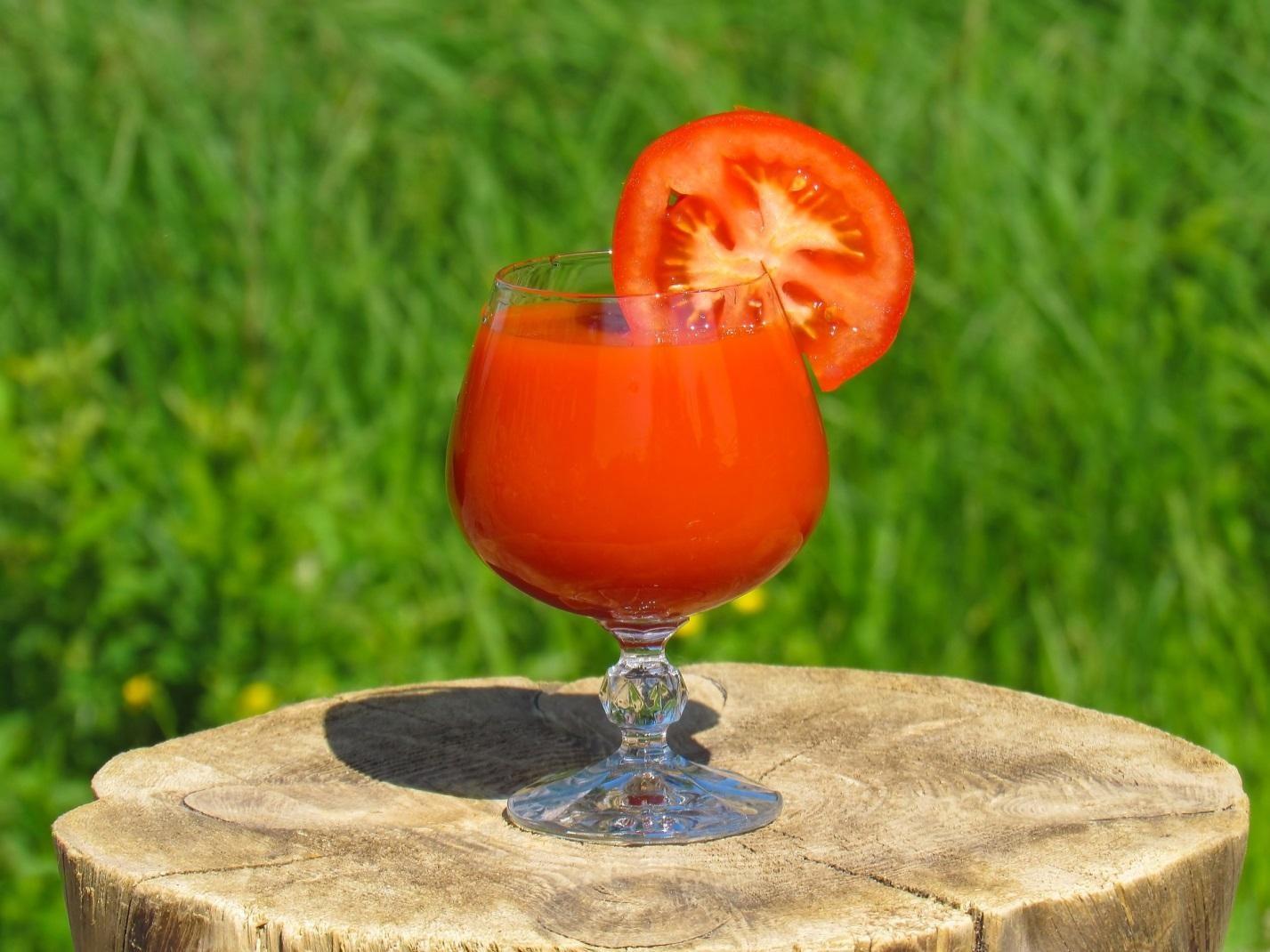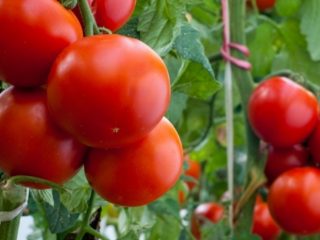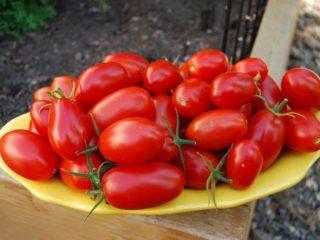Content
The Shuntuk giant tomato is loved by vegetable growers for its ease of care and huge fruits, which, with proper care of the crop, can reach 800-1500 g. The species is often called “hero” or “giant”.
Breeding history
The Shuntuk giant was bred by breeders from Adygea. Initially, the variety was intended for greenhouse cultivation. During the cultivation process, it was possible to establish that in warm regions tomatoes grow well without shelter.
Three breeders participated in the creation of the variety: Stolpnikova, Krasnikova and Kononov. It was officially entered into the State Register of the Russian Federation in 2005.

Tomatoes of this variety are stored for a long time and do not spoil
Description of the tomato variety Shuntuksky giant
Mid-season tomatoes (110-115 days). The Shuntuksky giant variety is indeterminate and bears fruit throughout the entire growing season. The length of the stems can reach 3.5 meters.
The minimum weight of tomatoes is 400-500 g, the maximum is 1.5 kg. If you follow all the growing recommendations, you can harvest 3-7 kg of crop from one bush. The Shuntuk giant requires obligatory tying; even a powerful stem is deformed under the weight of ripening fruits. When landing at a permanent place, be sure to maintain a distance of 1 m2 no more than two bushes, with the formation of one stem on each.

Shuntuk giant tomatoes are harvested throughout the growing season
Characteristics of the Shuntuk giant tomato
The tomato fruit consists of 10 seed chambers. The lower the tomatoes are located on the stem, the fewer seeds there are inside.
Tomatoes are round in shape, slightly flat. The surface is ribbed. The pulp is sweet, fleshy, without sourness. The skin is red, dense, smooth. At the formation stage, Shuntuk giant tomatoes acquire a light green color. There is a dark green spot in the stalk area. As tomatoes ripen, they turn red.
Tomatoes tolerate high air temperatures and periodic droughts well. The best soil for them is loam with a pH of 5.5-6.5.
Ripening and fruiting
The first inflorescences appear above the 8-9 leaf. Next they go through 1-2 sheets. Each inflorescence has 4-6 ovaries. To achieve maximum weight of tomatoes, only two ovaries are left.
Tomato yield Shuntuk giant
The productivity of the variety is high, under favorable conditions per 1 sq.m. you can get 12.9 kg, according to the breeders. But, as practice shows, the average is from 3 to 7 kg.

The share of marketable fruits is 86%
Resistance to diseases and pests
Shuntuk giant tomatoes have high immunity levels.They are resistant to pests and fungal pathologies.
In what regions is it grown?
The variety is intended for cultivation in greenhouses. But in the southern regions it bears fruit well without shelter. Excellent yields were obtained from gardeners from Adygea and the Krasnodar Territory.

In the south of the country, tomatoes are grown in open ground
Methods of application
Tomatoes are consumed fresh, in salads. Tomatoes are aromatic and tasty. Ideal for making sauces, juice, ketchup.
Advantages and disadvantages
Tomatoes of the Shuntuk giant variety are aromatic and pleasant to the taste. But these are not their only positive aspects.

Ideal for drinks
Advantages:
- large, juicy fruits;
- high productivity;
- the fruits contain a huge amount of vitamins;
- well stored;
- unripe fruits ripen at room conditions;
- seeds from your own harvest can be used for seedlings.
Flaws:
- a garter is required;
- pinching and thinning of the ovaries is required.
Recommendations for cultivation
Before sowing the seeds of the Shuntuk giant variety, they are treated with potassium permanganate. The procedure stimulates vigorous shoots and provides additional protection against diseases.

To speed up germination, seeds are placed in a damp cloth for 1-2 days, after which they are planted in the ground.
Seedlings are planted in a permanent location in mid-May. But we need to monitor the air temperature so that the threat of frost passes. Before planting, a small amount of organic matter is placed in the holes. It is best to water the bushes with warm water.
If the soil has not been improved for more than three years, then before planting it is recommended to add compost at the rate of 20 kg per 1 m2.If the soil is not loose or soft, then it is recommended to add peat and sand.
Vermicompost is added to fertile soil before winter - no more than 4 kg per 1 m2. The procedure will stabilize acidity and improve structure. For soil irrigation, you can use Gumi-Omi, Sotka Chernozem.
In general, there are no special requirements for caring for the variety. You just need to follow simple rules:
- bury the seeds into the ground no more than 1-1.5 cm;
- plant seedlings in open ground 60-70 days after sowing;
- keep your distance on the basis that per 1 sq. m. no more than two bushes;
- apply mineral fertilizers during the fruit filling process;
- when planted in a permanent place, the bush should have 9-12 leaves, and the height of the plant should reach 35-40 cm.
It is recommended to water before sunrise or after sunset. The water should be warm. Young plants do not need a lot of moisture, otherwise they will not cope with the huge amount of soil salts. Young seedlings require no more than 1.5-2 liters per bush (in a greenhouse) and up to 3 liters in open beds. During flowering, the volume is increased to 3-4 liters under cover and up to 6 liters in the garden.
Diseases and pests
Tomatoes are resistant to the most common types of fungal diseases. They are rarely attacked by aphids and slugs. However, agronomists recommend protecting plants from infections by using biofungicides. For these purposes, use Shine-1 or ash. They are effective as preventive agents against fusarium and verticillium.
Like most tomatoes, the Shuntuk giant can be attacked by the Colorado potato beetle.

To get rid of the Colorado potato beetle, products based on glyphosate and imidacloprid are used, for example, Typhoon, Bombardier
The mole cricket appears on very moist soil, into which manure is often added. The main danger of the insect is that it breaks through passages in the ground and destroys the root system. As a result, the bush does not develop normally.
8
Methods of combating mole crickets - treatment with Medvetox, Confidor
Advice! To prevent the appearance of mole crickets, it is recommended to reduce the amount of manure applied and regularly loosen the rows.
If the stems and foliage develop sluggishly, then the plant does not have enough nitrogen. To replenish it, calcium nitrate is used, which, after dilution, is injected under the root.
Important! You should not use growth stimulating drugs if the plant is developing normally. The product may adversely affect the taste of tomatoes.
If summer does not indulge in warmth and sun, then it is recommended to fertilize with Borogum-M and fertilize with magnesium sulfate. This will help normalize the pollination process and strengthen the buds.
Conclusion
The Shuntuk giant tomato is liked by many gardeners. The culture is not picky, resistant to many fungal diseases. The main advantage of the variety is the ability to grow huge tomatoes weighing up to 1.5 kg and get a decent harvest from one bush.
Reviews from gardeners about Shuntuksky giant tomatoes








